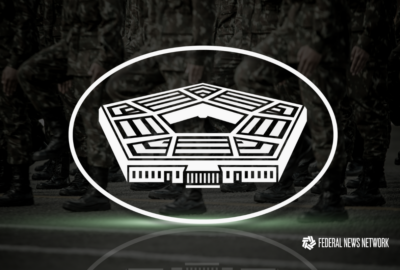What’s next for the armaments industry as the Trump administration arrives
"I think there's opportunity to improve how fast we can innovate within the National Armaments Consortium," said Ben Harris.
The armed forces are about to get a new commander in chief. The collective that brings together a critical segment of the defense industrial base also has a new leader. The National Armaments Consortium has named a decorated Army combat veteran and long-serving civilian executive as its new executive director. Ben Harris joined the Federal Drive with Tom Temin to discuss.
Interview transcript:
Tom Temin What are the top issues? Let’s start there. Facing armaments manufacturers that the consortium is hoping from the new leadership that’s about to come in to the Defense Department.
Ben Harris Well, Tom, that’s a great question. So the National Armaments Consortium operates under what is called the other transaction authority, which is a way that is for the Army, the Navy, the Air Force, the Marine Corps, all of the DoD to develop technology prototypes more rapidly than we do, typically under the Federal Acquisition Regulation. But what we’ve seen in the last couple of years is some bureaucracy and some red tape creep into that process that’s slowing down our ability to deliver innovative technology to our warfighters. So I’m hoping Elon Musk or his team is listening, there’s an opportunity for them to call us or go to our website, reach out to us because I think there’s opportunity to improve how fast we can innovate within the National Armaments Consortium.
Tom Temin And the shipment of all sorts of arms from small to very large, expensive and sophisticated all over the world, to Ukraine and maybe to a lesser extent to Israel in the last couple of years. Would you say that has led to some new thinking about what the next generation of armaments might look like from lessons learned in the deployment by others of our stuff?
Ben Harris Tom, absolutely. The Chief of Staff of the Army, General George, said what we need to think about doing is innovating at the round. We don’t have the time or the luxury to develop complete new weapons systems. We have a lot of very advanced, very high quality weapon systems out there. But what we can do, is we can put advanced fuses on munitions to give them multipurpose capability. We’re borrowing, for example, a technology that was developed under the NAC, the warhead that’s in the javelin, which was the missile that saved Ukraine when the Russians first invaded. That warhead was adopted by Switchblade, and that’s the loitering munition that is currently being used throughout the world to help us attack the enemy.
Tom Temin Talk more about the red tape and bureaucratic process that you see has crept into this. What’s going on?
Ben Harris What we’re seeing is a lot more of the FAR language and some of the FAR cost accounting standards being implemented or utilized when they’re analyzing our proposals. Most of our members, 84% of our members, we have over 1094 members. Most of them are small businesses. Small businesses are exempt from having to follow the cost accounting standards. But what we’re seeing is those requirements and those standards are creeping into our processes where they shouldn’t have to be. OTAs are risky, and they’re risky for a purpose. We want to go fast. We wanted to deliver prototypes to see if they work, even if they don’t work. The Abrams is my favorite example. I’m a tanker and that’s where I came from. We took prototypes from Chrysler, we took prototypes from General Dynamics, and we took prototype technology from the United Kingdom, merged it together, and we developed the world’s greatest tank and it still is to this day.
Tom Temin So this seems to be maybe occurring at the contracting officer level or at the program level that they’re asking for things that are normally under FAR.
Ben Harris I think I’m seeing it at the contracting officer level, but I’ve only been on the job a month, so I’ve got a lot more research to do and dig into this. I don’t want to pointing fingers right now, but what we’re looking at is the data that we have and the trends that we’re seeing as our time to award is getting longer and longer. And what I’m being told is mostly it seems to be some fog creep coming in to the process.
Tom Temin Well, your experience in the Army for 20 years, and I guess 16 years in civilian service after that must have given you some clue to the fact that bureaucracy tends to expand. It never seems to retract.
Ben Harris Yes. Again, I would like to show Elon Musk the Federal Acquisition Regulation. I would like to show him what it looked like in 1944, 1942. There wasn’t one. And how it is grown to something that’s larger than the King James Bible and a finer and smaller font.
Tom Temin We’re speaking with Ben Harris. He’s executive director of the National Armaments Consortium. Maybe tell us a little bit about yourself. You come to this, as we’ve hinted with some pretty good background in both acquiring and using armaments.
Ben Harris Yes, Tom. So West Point graduate, class of 88, I was armor deployed to Desert Shield, Desert Storm with 24th Infantry Division as a scout. At my tenure point, I transitioned in the acquisition where I was doing innovation and development. I worked on a new 120 millimeter tank round and developed and fielded that. I ended up writing requirements for the Abrams tank. We developed the reactive armor and implemented that in Iraq. We put the common remote operated weapons systems on the Abrams tank, innovated that into the tank. We put backup cameras, new counter IED seats in the tank. So I had a lot of experience doing that. And when I retired after 20 years, I started innovating. We developed a top ten Army invention, the new enhanced performance round back then for the 556, making 556 more lethal than a 7.62mm ball round. We want a Packard Award for that. I continued to do that with the Army’s most advanced 155mm GPS guided Excalibur round, where a lot of classified innovation was going into that. And we continue to see that going on. I worked with the NAC when I was in the shoulder, launched munitions portfolio, testing prototypes to improve the lethality of our shoulder launched munitions for our warfighters. We basically took two shoulder launch munitions, merged them into one with multipurpose capability. I spent a couple of years modernizing our industrial base, so I’m very familiar with supply chain issues. My portfolio as the deputy was responsible for modernizing five of the Army’s ammunition plants and then as chief of staff, once Ukraine started that’s what we focused on for the last 30 months.
Tom Temin Yeah, what I’m hearing is a subtext of this is that those in the programs and the contracting officers and [Contracting Officer’s Representative (CORs)] that work for the COs need to never forget who it is into which hands these armaments are going to go out. The front line people are the ones ultimately that this all serves.
Ben Harris Yeah, Tom. As a war fighter myself, I was handed the first generation GPS handheld systems the day before we went into Iraq. If that had been a day late, we would have been navigating with paper maps and compasses and nothing else.
Tom Temin So then again, let’s get back to what you’re hoping for in the future. What does it look like? Are you getting any signals yet?
Ben Harris I haven’t seen any signals there, but we are hearing some good things from the contracting center. We’ve already initiated some meetings with them at the end of last year. I have to say, by the way, I just got to give a shout out to contracting. The contracting team that we work at is the same contracting team that developed the COVID vaccines and got those out to the entire United States. This contracting team does the same contracting that in 2022, at the end of that year, when our budget doubled from 3 billion to 6 billion, they were to get all that money obligated within a year. So there’s a lot of work being stuffed into a very small contracting. So and our focus is on the obviously the bigger items, the dollars that are expiring were a little bit smaller. So far this year, though in FY 25, we’ve already awarded almost $685 million. Last year we did about $2.5 billion. So we’re still pretty large when you look at what their workload is.
Tom Temin And what’s your sense of the capacity? Because during the height of when we were helping Ukraine, I guess we still are certain basic commodities like the Howitzer shell were in short supply and we were running out in case the United States needed them. I don’t know what the status of that is now, but is that something you’re watching? Is US own stockpile to make sure that we can do what we have to do should the need arise?
Ben Harris In my previous job, I was watching that and a lot of that is classified, so I don’t really want to go there. But we’re not out of ammunition. We have given away a lot of old ammunition and we have tripled within the last two years how much we make on a monthly basis. So I think the Army and the Service is doing a really good job on its artillery. We also we’re able to slow down how much we were giving to the Ukraine so we could build back and replenish our inventories faster. I’m aware of that, but the supply chain is important. The administration has been talking about on shoring everything and we were talking about this with the previous administration. We cannot rely on China for anything. The classic example that I want to highlight here is antimony sulfide. It’s used in the production of solar panels. It’s also used in the production of ammunition. So the [Office of the Secretary of Defense (OSD)], they have a consortia that is working on on shoring capability to the United States. We are part of that process. And Perpetua out in Idaho has a gold mine that was shut down after World War II that we’re trying to bring back, and we’re part of that process. So as you develop a new capability, you still have to qualify that material. So there was a prototype award under our [Department of Defense Ordnance Technology Consortium (DOTC)] effort for over $15 Million to qualify the process that they can make antimony sulfide to military grade specifications. That’s a success story, and that’s what the NAC brings.
Copyright © 2025 Federal News Network. All rights reserved. This website is not intended for users located within the European Economic Area.
Tom Temin is host of the Federal Drive and has been providing insight on federal technology and management issues for more than 30 years.
Follow @tteminWFED







